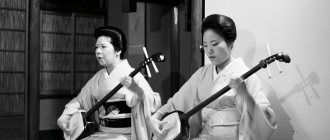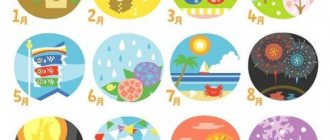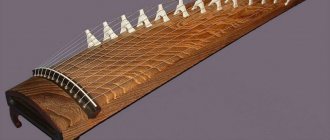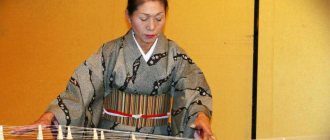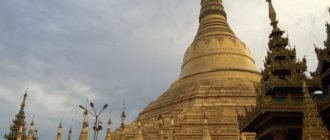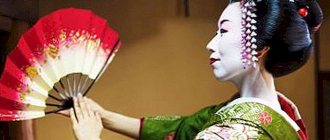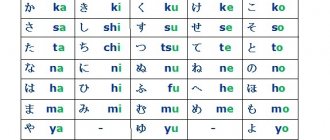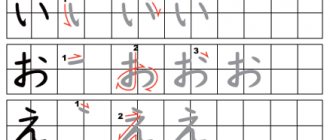One of the most important components of Japanese culture and the Japanese worldview is music. With this work we open a series of articles devoted to the unique traditional musical culture of ancient and modern Japan.
Japanese traditional music is called ho:gaku (邦楽(ほうがく) in Japanese. You can also find the names 和楽(わがく)or 国楽. Sometimes, to separate the concepts of traditional and popular music, Japan uses the term 「純邦楽」, which literally means “authentic Japanese music (traditional).”
The genre diversity of Japanese traditional music is great. It is not possible to consider them outside the cultural and historical context, since musical genres, songs and poetry in Japan are always a spiritual reflection on historical, cultural, and religious events.
Therefore, focusing on music, for a more complete understanding of its historical dynamics, we propose to consider it in a certain historical and cultural context. Moreover, this is exactly how the history of Japanese traditional music is presented on the Japanese website of the national musical tradition of the land of the rising sun jtrad.columbia, the materials of which served as the basis for the author’s translation and creation of this article.
So, the history of the formation and development of traditional Japanese musical culture can be divided into several stages: Ancient period
(prehistoric - 1185 AD, end of the Heian era)
Medieval period
(1185 - early 17th century, beginning of the Edo era)
Early Modern Time
(Edo era 1600 - 1868)
Post-Meiji Restoration period
(since 1868 to present time)
Each period is unique in its song forms, vocal works, stylistic diversity and instrumental sound. Traditional Japanese music still maintains the continuity of ancient Japanese musical traditions, representing an invaluable world cultural heritage.
The main themes in the content of folklore
Japanese folklore is influenced by two religions: Buddhism and Shintoism. The main themes of Japanese legends are supernatural characters, spirits, and animals with magical powers. Also an important part of folklore are instructive stories about gratitude, greed, sad stories, witty parables and humoresques.
The task of art is to worship nature, the task of music is to become part of the surrounding world. Therefore, the composer's thought is not subordinated to the expression of ideas, but to the transmission of states and natural phenomena.
Symbols of Japanese culture
The first association with Japan is sakura (Japanese cherry). The country has a special ceremony for admiring its blossoms - hanami. The tree is repeatedly sung in Japanese haiku poems. Japanese folk songs reflect the similarity of natural phenomena with human life.
Not inferior in popularity to sakura, the crane is a symbol of happiness and longevity. It is not for nothing that the Japanese art of origami (folding paper shapes) has become popular all over the world. Making a crane means attracting good luck. The image of a crane is present in many Japanese songs. Other symbols are also taken from the surrounding world. The symbolism of Japanese culture is natural symbolism.
Main song and dance genres
Like other nations, Japanese folk music has undergone an evolution from ancient magical forms to secular genres. The formation of most of them was influenced by Buddhist and Confucian teachings. The main classification of Japanese music genres:
- religious music,
- theater music,
- Gagaku court music
- folk everyday songs.
The most ancient genres are considered to be Buddhist chants of shomyo and court music of gagaku. Topics of religious chants: Buddhist doctrine (kada), tenets of teaching (rongi), pilgrimage hymns (goeika), songs of praise (vasan). Shinto music is music to please the gods, short cycles of songs and dances in costumes.
The secular genre includes court orchestral music. Gagaku is an ensemble borrowed from China that performs instrumental (kangen), dance (bugaku) and vocal (uachimono) music.
Japanese folk dances have their origins in ritual performances. The dance involves strange, sudden movements of the arms and legs, and the dancers are characterized by twisted facial expressions. All movements are symbolic and understandable only to initiates.
There are two types of modern Japanese dance: odori, an everyday dance with sharp movements and jumps, and mai, a more lyrical dance that represents a special prayer. The odori style gave rise to kabuki dance, and subsequently the world-famous theater. The Mai style formed the basis of Noh theater.
About 90% of the music of the Land of the Rising Sun is vocal. Important genres of folk music are folk tales, songs accompanied by koto, shamisen and ensembles, and ritual folk songs: wedding, work, holiday, and children's.
The most famous Japanese folk song is the song “Sakura” (that is, “Cherry”):
DOWNLOAD NOTES -
Bunraku music
Bunraku (puppet theater) also developed from popular performances and flourished during the Edo period. The performances are accompanied by joruri recitatives and shamisen accompaniment. The storytellers and musicians are located on a special platform extending from the right (viewer's side) part of the stage. During the performance, only the narrator speaks or sings; he is responsible for all the roles and the main text. The narrator performs his part in three styles: speech (kotoba), tale (jiai) and singing (fushi). These styles alternate, usually the dialogues are performed in kotoba, the narration is told in skaz, and especially emotional moments are highlighted by singing. The narrator can speak either alone or in a group; the narration is conducted either by one narrator or by a choir. Shamisen enters during narration or singing, as well as during pauses. There are special symbols for heroes with certain melodies, so by playing the shamisen you can understand which doll is about to enter and what kind of character it has. The sounds of shamisen convey the emotions of the characters, emphasize the nature of the events taking place, and highlight certain climactic moments.
Musical instruments
Almost all of the ancestors of Japanese musical instruments were brought to the islands from China or Korea in the 8th century. Performers note only the external similarity of instruments with European and Asian models; in practice, sound production has its own characteristics.
Koto is a Japanese zither, a stringed instrument that represents a dragon. The body of the koto has an elongated shape, and when viewed from the side of the performer, the head of the sacred animal is on the right, and its tail is on the left. The sound is extracted from silk strings using fingertips, which are worn on the thumb, index and middle fingers.
The shamisen is a plucked string instrument similar to a lute. It is used in the traditional Japanese Kabuki theater and is a hallmark of Japanese culture: the colorful sound of the shamisen in ethnic music is as symbolic as the sound of the balalaika in Russian music. The shamisen is the main instrument of traveling goze musicians (17th century).
Shakuhachi is a Japanese bamboo flute, one of the representatives of a group of wind instruments called fue. Producing sound on a shakuhachi depends not only on the air flow, but also on a certain angle of inclination of the instrument. The Japanese tend to animate objects, and musical instruments are no exception. It can take several months to tame a shakuhachi spirit.
Taiko - drum. The tool was indispensable in military operations. A certain series of taiko strikes had its own symbolism. Drumming is spectacular: in Japan, both the musical and theatrical aspects of performance are important.
Singing bowls are a feature of Japanese musical instruments. There are almost no analogues anywhere. The sound of Japanese bowls has healing properties.
Singing wells (suikinkutsu) are another unique instrument that consists of an inverted jug buried in the ground with water placed above it. Through a hole in the bottom, the drops enter and make sounds reminiscent of a bell.
Kabuki music
Kabuki theater originated in the 17th century, and the performance included dances, which later became a separate genre of performing arts, nihonbuyo . Kabuki music includes 4 main genres of music for shamisen: gidayu, which comes from the fairy tale genre of joruri, tokiwazu and kiyomoto - other styles of joruri, nagauta - lyrical songs performed in the dance part, kage-bayashi - music performed off stage by an ensemble for nagauta and many percussion instruments. Musicians who are not members of the Kagebayashi are located on the stage and are referred to as Debayashi (music on stage). There is also a Hayashi ensemble of three drums and one flute. On the stage there is an ensemble for nagauta, in front of it is a hayashi ensemble, and in front of it there is dancing. The storytellers are located on an elevated platform to the left, and the kiyomoto and tokiwazu musicians are located on additional platforms on either side of the stage. In a special room, screened off from the viewer, there is a kage-bayashi ensemble, where there are especially many percussion instruments (rattles, gongs, bells) and wind instruments. This ensemble performs the sounds of falling rain, snow and creates other necessary sound effects. Also, wooden rattles announce the beginning and end of the performance. Their abrupt sounds are repeated in a staccato rhythm. Wooden rattles are also used as one of the percussion musical instruments during the performance.
Style features of Japanese music
The modal structure of Japanese music is fundamentally different from the European system. The basis is a scale of 3, 5 or 7 tones. The mode is not major or minor. The intonation in Japanese folk music is unusual to the European ear. Pieces may not have a regular rhythmic organization - meter, rhythm and tempo often change. The structure of vocal music is guided not by the pulse, but by the breath of the performer. This is why it is well suited for meditation.
The lack of musical notation is another feature of Japanese music. Before the Meiji era (i.e. before the arrival of the European recording model in the country), there was a system of notations in the form of lines, figures, and signs. They symbolized the desired string, fingering, tempo and character of the performance. Specific notes and rhythm were not prescribed, and the melody was impossible to play without knowing it in advance. Due to the oral transmission of folklore from generation to generation, much knowledge was lost.
A minimum of dynamic contrasts is a stylistic feature that distinguishes Japanese music. There are no sharp transitions from forte to piano. Moderation and slight variations in dynamics make it possible to achieve expressiveness characteristic of the East. The climax in Japanese tradition occurs at the end of the play.
Japanese music during the war and post-war years
Since 1941, Western music has been performed mainly by the Tokyo Symphony Orchestra . In 1945 it was renamed the Toho Symphony Orchestra , the New Symphony Orchestra became the NHK (Japan Broadcasting Corporation) Orchestra, and many other symphonies began to appear.
There is also a movement of Roon workers to introduce the working people to musical culture.
Japanese composers of this time, when composing operas, took Japanese tales and Buddhist legends as a basis.
In 1951, an electronic music studio opened at NHK.
The Japan Contemporary Music Association , which existed before the war under other names and organized festivals every year, the Association of Contemporary Composers (1946), Shinseikai (1946), Chijinkai (1948) and the experimental studio Jikken Kobokai (1949) were created
In the 60s group, the Ongaku and New Direction groups appeared, advocating improvisation, but many groups composed music for the Nipponia Orchestra, consisting of traditional instruments.
Foreign musicians began to visit Japan again from the mid-1950s, and Japanese musicians and composers also became famous abroad.
Currently, Western music is thriving in Japan. Teaching, performance, musical literature, instrument making - all this is now not inferior to Europe. There are six symphony orchestras in Tokyo, and all types of Western music are performed and composed in Japan, from Renaissance and Baroque music to jazz, rock and other contemporary styles. The confrontation between Western and traditional music remains, but is not expressed as clearly as it was before.
